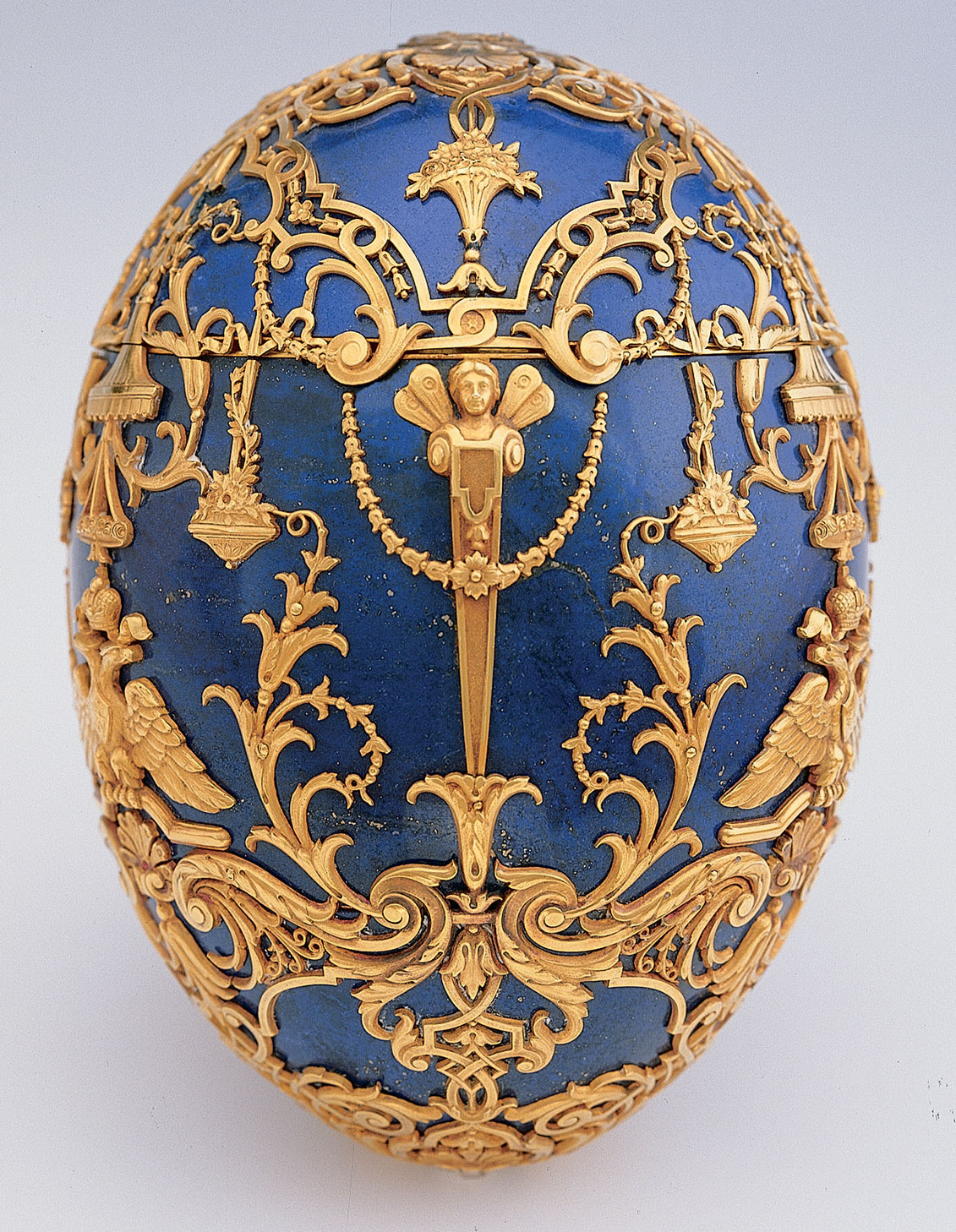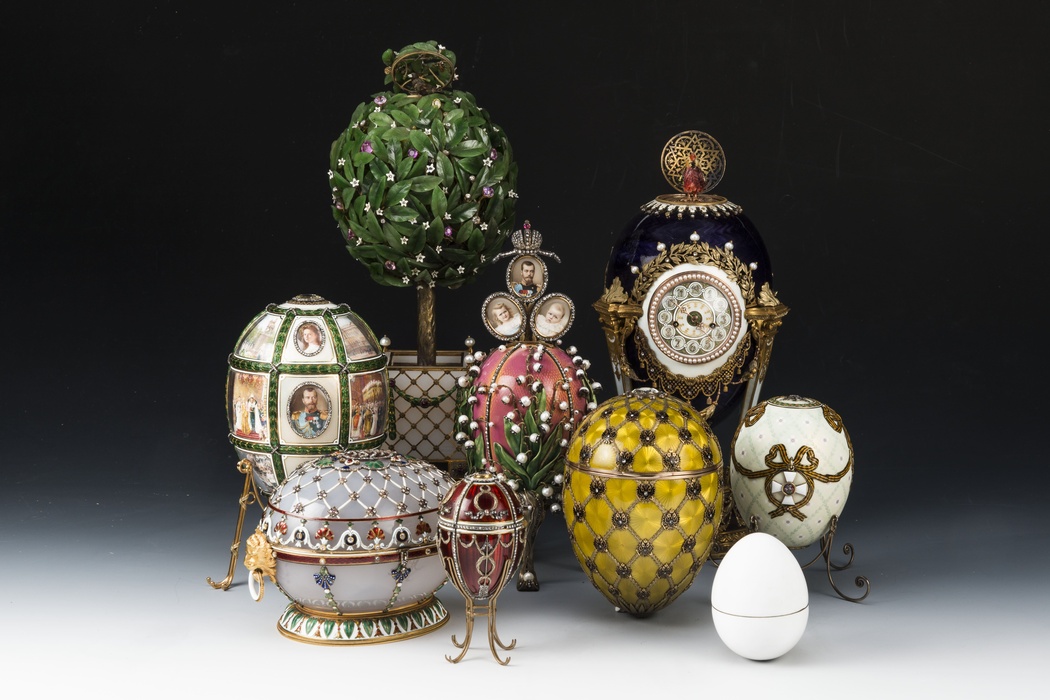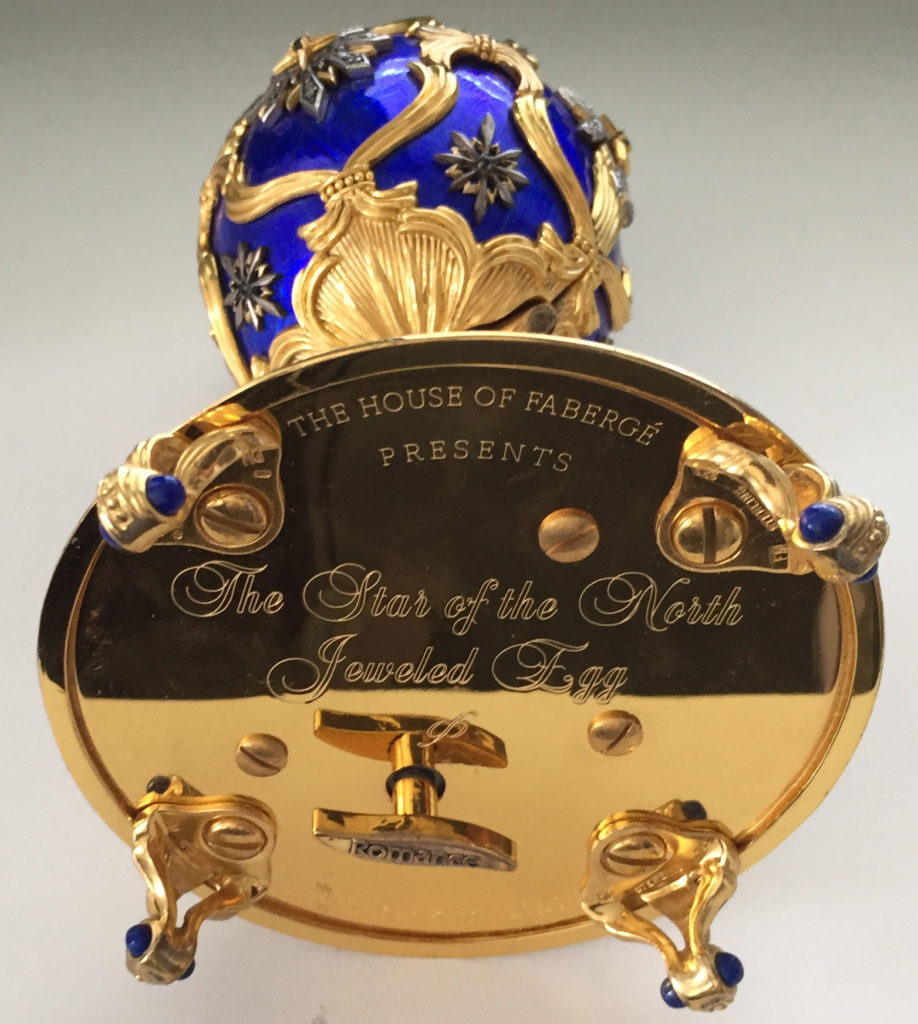
Fabergé egg Wikipedia
The Russian imperial family were Fabergé's most important clients, and the Easter eggs its most important commissions. Peter Carl Fabergé — also known as Karl Gustavovich Fabergé — first attracted the attention of the family at the Pan-Russian Exhibition in Moscow in 1882, where he exhibited a replica of a 4th-century B.C. gold bangle from the Hermitage Museum's Scythian Treasure.

Simply Creative Magnificent Fabergé Eggs
The firm's logo in 1908. The House of Fabergé (French pronunciation:; Russian: Дом Фаберже) was a jewellery firm founded in 1842 in Saint Petersburg, Russia, by Gustav Faberge, using the accented name Fabergé. Gustav's sons - Peter Carl and Agathon - and grandsons followed him in running the business until it was nationalised by the Bolsheviks in 1918.

The Fabulous Fabergé Eggs of The Russian Imperial Family Amusing
Die Welt von Fabergé Die Kaiserlichen Fabergé Eier Die berühmte Serie von 50 kaiserlichen Ostereiern wurde zwischen 1885 und 1916 für die russische Kaiserfamilie angefertigt, als das Unternehmen von Peter Carl Fabergé geleitet wurde. Diese Kreationen sind untrennbar mit dem Glanz und dem tragischen Schicksal der letzten Romanows verbunden.

Pin de Soledad Vilchez 1 em Fascinating Fabergé Eggs Ovos fabergé, Caixa de música, Jóias
A Fabergé egg ( Russian: яйцо Фаберже, romanized : yaytso Faberzhe) is a jewelled egg created by the jewellery firm House of Fabergé, in Saint Petersburg, Russia. As many as 69 were created, of which 57 survive today. Virtually all were manufactured under the supervision of Peter Carl Fabergé between 1885 and 1917.

Pictures Of The Eight Missing Imperial Eggs Karl Faberge genius Russian
The Dowager (or Imperial Pelican) Fabergé egg, is a jewelled Easter egg [1] made under the supervision of the Russian jeweller Peter Carl Fabergé in 1898. [2] The egg was made for Nicholas II of Russia, who presented it to his mother, the Dowager Empress Maria Feodorovna on Easter 1898. [2] Design

Faberge, Faberge Egg, House of Faberge, Fabergé, Faberge Auction
The celebrated series of 50 Imperial Easter eggs was created for the Russian Imperial family from 1885 to 1916 when the company was run by Peter Carl Fabergé. These creations are inextricably linked to the glory and tragic fate of the last Romanov family.

The Faberge Lillies of the Valley Egg Faberge eggs, Faberge, Egg art
A Faberge egg: so delicate and priceless you wouldn't want to hold it. A grenade: so volatile and destructive you wouldn't want to hold it. The juxtapositions are interesting, but not as.

Original FABERGÉ Meissen Egg
March 9, 2020 Faberge egg, an ornamented egg made by the famous house of Faberge. The number of Faberge eggs are not exactly known for some are untraced or of unknown location. The only itemized and most popular Faberge eggs are made for the Romanov Imperial family.

The Lost Fabergés The Mystery Behind the World's Most Famous Eggs Catawiki
Als Fabergé-Eierwerden Schmuckgegenständein Form von Ostereiernbezeichnet, die zwischen 1885 und 1917 in der Werkstatt von Peter Carl Fabergéin Sankt Petersburgangefertigt wurden.

BeautifulNow is Beautiful Now See Original & New Fabergé Eggs Happening Now
Welcome to Fabergé - Explore the world of Fabergé and discover incredible fine jewellery creations and collections, including stunning Fabergé eggs and jeweled egg pendants.

FabergeEi der Franklin Mint, vergoldetes massives Silber 925‰, blaue Emaille
CNN — For over a century, the name Faberge has evoked wealth, opulence and the world's most extravagant Easter eggs. The small, intricately decorated objets d'art - which Russia's royal House.

The Fabergé Museum in St. Petersburg much more than Easter eggs
Free Shipping Faberge Antique Guilloche Enamel Diamond Gold Brooch Free Shipping Paper Knife by Fabergè, Early 20th Century Vintage Gold Bracelet with Faberge Egg Charms Free Shipping Fabergé Diamond and Enamel Cufflinks, circa 1899 Free Shipping Faberge Bi-Color Ribbed Gold Cigarette Case Free Shipping
Lilies of the Valley (Fabergé egg) Wikipedia
The Mosaic egg is a jewelled enameled Easter egg [1] made under the supervision of the Russian jeweller Peter Carl Fabergé in 1914. [2] The Fabergé egg was made for Nicholas II of Russia, who presented it to his wife, the Empress Alexandra Feodorovna on Easter 1914. [2]

St. Petersburg museum tells the story of exquisite Faberge eggs Travel Weekly
On loan to The Met The Met accepts temporary loans of art both for short-term exhibitions and for long-term display in its galleries.. Imperial Napoleonic Egg. House of Carl Fabergé Workmaster: Henrik Emanuel Wigström Miniatures by Vassily Ivanovich Zuiev Russian. 1912 On view at The Met Fifth Avenue in Gallery 555

FabergeEi der Franklin Mint, vergoldetes massives Silber 925‰, blaue Emaille
Carl Fabergé didn't start the business. Gustav Fabergé, photograph, 1860s. It was established by his father, Gustav, in St Petersburg in 1842. Carl Fabergé joined the family business in 1864, aged 18, having done a Grand Tour of Europe during which he studied the art of the goldsmith in the collections of museums, libraries and individuals.

Pin on Faberge Eier
House of Fabergé. Gatchina Palace Egg, 1901. Walters Art Museum. Known to take one to two years to realize, each egg required the work of various craftsmen of differing expertise—from metalsmithing to diamond-cutting, enamel work to painting. Two chief craftsmen oversaw the production of the eggs, but Fabergé was at the helm.